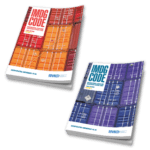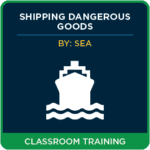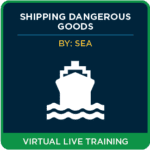
Hello everyone! Ok, so in this blog, I would like to talk to you about a refusal event that a company experienced when attempting to make a shipment by sea or vessel as stipulated in our TDG.
When we talk about TDG permits, we normally think of a permit with an equivalent level of safety or a certificate of equivalency.
In the following scenario, none of these are involved.
This refusal involves a shipment of Class 3 dangerous goods (DG), namely flammable liquids, in small means of containment.
The DG is contained in a 40′ intermodal container, and the container was filled.
So, after having discussed with the client, I asked who actually refused and for what reason.
The customer told me that the Port of Montreal refused because they no longer accept class 3 flammable liquids.
This is, of course, quite peculiar, and I have never heard of such a rule.
I insisted the client ask where that information came from. Finally, the forwarder passed on a message from the shipping company Maersk, which in turn told the former that the Port of Montreal does not accept Class 3 cargo of flammable liquids.
Do not forget that during this period of refusal, the customer cannot give his dangerous goods to the carrier. This not only caused a delay, but the goods could not be loaded on board for shipment.
I was curious, of course, and I went directly to the Port of Montreal’s website to see if this news or information was good and true.
I searched everywhere and spent several minutes wondering where and how and why the Port refuses to take flammable liquids.
I started with the tab ”News & Events,” but I didn’t find anything helpful. There was no information regarding restrictions on different types of goods.
I then went to the tab ”Transport of goods,” and there were several options. So I went to “Notifications” but still didn’t find any information except that the latest news was about the end of the Port strike in August 2020.
I continued my search, and this time I went to “Operations,” under which appears “Dangerous Goods.”
Once on this page, I found the following:
A permit must be received for all dangerous goods in transit through the Port of Montreal.
The application for a dangerous goods permit must be completed by the person in charge of the vessel and sent by e-mail before the arrival of the goods at the Port of Montreal. The form can be sent to the following email address: [email protected].
It is very important to note here that the permit application MUST be filled out by the person in charge of the vessel and sent by email before they arrive at the Port of Montreal.
It is clear that our client is not in charge of the vessel and therefore has no responsibility for this permit.
Under these texts, three other options were present:
- Access the application form
- Check the list of dangerous goods before your arrival
- Check the current fees for the various declared dangerous goods
Under the option to check the list of DG’s prior to our arrival, we can display a document listing all DG’s that are under surveillance and which require the presence of a Montreal Port Authority fire inspector during handling.
To my surprise, Class 3 is included in this list, but this only applies to the following DGs:
- Nitrocellulose & Nitroglycerine / Nitrocellulose & Nitroglycerine
Remember that the shipping company declared that class 3 flammable liquids are not accepted by the Port of Montreal. We now know that this is false since only the products listed above must be under supervision and are not forbidden.
I then asked the client to contact the Port of Montreal directly to find out what was going on.
The answer? The Port of Montreal was under the threat of a strike that had lasted from 2018 until August last year. A 7-month truce had been reached between the parties, and it expires in March 2021.
The real reason for the shipping company’s refusal is simply that the vast majority of ships destined for the Port of Montreal must redirect their arrivals to other ports in order to avoid being held hostage and not being able to leave the port for several weeks before the dispute is settled.
The solution? The customer was forced to redirect the shipment via another port to ensure that it would not be refused.
In conclusion, it is always very important to get to the bottom of things before accepting any information from your forwarder or carrier.
Secondly, the Port of Montreal does have a list of DG’s that must be monitored, but no restrictions apply to Class 3 flammable liquids, as the carrier and forwarder declared to the client.
Finally, the famous permit is not a procedure applicable to shippers of DG, but rather to ships entering the territory of Canada and which must declare their DGs before their arrival at the Port of Montreal.
Don’t forget that our Regulatory Experts at ICC are available to assist you if you ever have any refusals and would like to better understand or resolve the issue.
Stay up to date and sign up for our newsletter!
We have all the products, services and training you need to ensure your staff is properly trained and informed.
 IMDG Publications |
 Shipping Dangerous Goods by Sea (IMDG) – Virtual Live 1 Day Refresher Training |
 Shipping Dangerous Goods by Sea (IMDG) – Virtual Live 2 Day Training |





